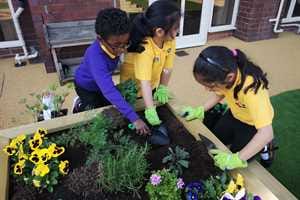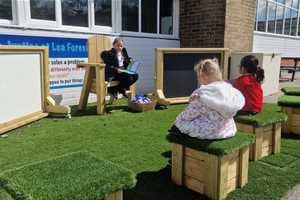
Outdoor Learning and Play
Is a Mud Kitchen Worth It? 5 Eye-Opening Facts You Should Know!
Most people when asked about outdoor childhood memories always remember the time when they played with mud and made mud pies! The squelchy feeling between your fingers, the fun of mixing mud, water, and other garden findings together, pouring the mixture into pots and bowls, and the general messiness of it all, created fond memories from your early childhood!
What we didn’t realise at the time, is that playing with mud was helping us to learn and develop. By introducing Mud Kitchens into school and home environments, your children can learn and develop through Messy Play.
What are Mud Kitchens?
Mycock (2019) states Mud Kitchens provide “an outdoor space where children are encouraged to play with mud.” (p. 459)
Mud Kitchens are like children’s indoor play kitchens, but they are based outside. Encouraging children to get messy and be creative in a small, contained area.
Outdoor Mud Kitchens allow children to cook, bake and make potions, etc. They can use wooden/plastic spoons, bowls, pots, pans, scales, and measuring jugs for example, just like children would when pretending to play inside.
However, when outside they can use mud, soil, water, plants, grass, leave and sticks, etc to make their very own mud pies and concoctions. Children can follow or make up their own Mud Kitchen recipes to create their own muddy creations! Letting their inner chef’s creative juices flow and bake, bake, bake! Does anyone want a slice of mud pie?
What age groups benefit the most from Mud Kitchens?
Mud Kitchens are a great resource for children aged 1 to 7 years. However, older children are likely to enjoy playing with it too!
Ages 2-4 years (Nursery):
Children aged 2-4 years who are at pre-school and nursery benefit greatly from playing with Mud Kitchens, as they provided the perfect resource to promote and obtain key learning development milestones. They provide a platform that encourages communication, socialising skills, physical development skills, understanding of the world, and sensory play.
Ages 5-8 years (Primary School):
Children aged 5-8 years who are at primary school love playing in Mud Kitchens. Even 9–11 years olds like to get stuck in! Showing Mud Kitchens are not age specific! They provide an outdoor environment that encourages Personal, Social, and Emotional development, creative play, and a fun arena for mathematical, scientific, and literacy-based learning through play.
Benefits of Mud Kitchens
Mud Kitchens can play a huge part in children’s learning and development through messy and interactive play, “creating a relational space of investigating and creating together, constructing, making and composing understandings.” Kind (2018). They promote independent play/learning outside which, in “today’s society” is important, as more and more children are not exposed to being outdoors due to changing lifestyles. The beauty of a Mud Kitchen is that you can easily create an EYFS Messy Play/Mud Kitchen zone in a classroom outdoor space or even in your own garden. They don’t take up a lot of room and are a fantastic resource to allow your children to play, be creative and learn!
So, let’s look more closely at the benefits of Messy Play and having a Mud Kitchen:
- Personal, Social, and Emotional:
EYFS Messy Play and Messy Play for KS1 onwards, is a fantastic way for children to grow personally, socially, and emotionally by:
- Sharing and taking turns with their friends.
- Improving communication and social skills.
- Improving their self-confidence by establishing new games to play and ideas for recipes and potions.
- Promoting problem-solving and improving collaborative work with their peers.
- Encouraging open-ended curiosity, exploration, and experimentation through play.
- Reconstructing everyday home events in their play (such as baking) allowing the children to connect with their peers.
- Exploring outdoors and playing freely helps children’s mental health and reduces anxiety and stress.
- Playing with mud and soil and developing children’s immune systems and physical health.
- Communications, Languages, and Literacy:
Children love to chat with each other whilst playing, hence why Mud Kitchens provide the perfect environment to encourage communication by:
- Allowing children to talk, discuss, describe, and listen to their peers and let them know what they are doing or want to do.
- Connecting with their peers through role-play games.
- Questioning peers about what they are doing, as well as answering open questions about how they are creating a mud pie and how they are going to make it.
- Physical Development:
Mud Kitchens are a great resource to help with children’s gross and fine motor skills by:
- Using kitchen utensils (spoons, forks, tongs) to stir, mix, pick up, and prod.
- Lifting and carrying water and soil in pots, pans, and jugs to make their mud pies.
- Maths, Literacy, and Science:
What better way to learn about Maths, Literacy, and Science without even knowing that you’re learning when playing with a Mud Kitchen? Children will automatically use linguistic, mathematical, and scientific skills by:
Literacy…
- Writing Mud Kitchen ideas such as Mud Kitchen recipes for mud pies and potions, writing menus for the Mud Kitchen restaurant and even writing the receipts for the customers.
- Mark making and letter writing in the mud or sand with their fingers and sticks.
- Encouraging language development through descriptive words, mathematical and scientific wording, questioning and exploration, and storytelling whilst the children are engrossed in role play.
Maths…
- Adding and subtracting when costing up the bill when playing restaurants.
- Using money when paying in the restaurant, café, or shop.
- Measuring, filling, emptying, and exploring capacity with soil and water, etc when making mud pies, potions, and drinks.
- Counting the ingredients when adding them to the mix.
- Weighing ingredients before adding them to the mix.
- Matching numbers to quantities.
Science…
- Promoting scientific investigations as the children use mud, water, sand, twigs, etc to mix, combine, transfer, and change.
- Learning to identify plants, mini-beasts, and minerals.
.jpg)
- Understanding the World and Expressive Arts:
Mud Kitchens allow children to be outside in nature and use their senses to work, play and create by:
Understanding the World…
- Discovering the environment around them using their senses.
- Using a diverse and authentic messy, sensory experience for the children via a wide range of natural materials.
- Discovering all about mud from how it feels and its colour, to how mud is made (soil, water, rocks, plants, etc).
Expressive Arts…
- Allowing children’s creativity and imagination to run wild when creating new and wonderful pies, potions, and drinks!
- Encouraging children to use their home knowledge and experiences to role play and become chefs, restaurant owners, waiters, and customers.
Therefore, concluding that Mud Kitchens contribute “towards an all-around development of children.” Rodari (1996). Allowing children to be “deeply interested in (their) own learning, the protagonist of (their) own growth and development” (Rinaldi, 2006, as cited in Kind, 2018, p. 9), and showing multiple benefits of Messy Play.
Mud Kitchen Fun Activities
There are so many different and wonderful activities that you can do with children in a Mud Kitchen. Pentagon Play has a wide range of Wooden Mud Kitchens which provide the perfect resource for ultra-realistic EYFS Messy Play and KS1 Messy Play.
Allowing children to discover their environment and create an understanding of the world around them. Standing at ideal heights for EYFS children, each Wooden Mud Kitchen provides a range of facilities to enhance children’s learning.
From chalkboards, ovens, shelving, twisting knobs, and removable stainless steel mixing bowls, children can pass the time creating in their own outdoor Mud Kitchen.
Here are a few fun and creative Mud Kitchen ideas and activities for your children to do:
1.Nature Cakes/Cupcakes:
What you need…
- Cake tin or cupcake tin (silicone works best!)
- Measuring Jug
- Weighing Scales
- Mixing bowl
- Wooden/Plastic spoons
- Mud, Sand, Water
- Flower petals, grass, twigs, leaves, acorns, pebbles etc
Activity…
This fantastic activity can be linked to a book you are doing in Literacy lessons such as The Tiger Who Came to Tea by Judith Kerr. Encouraging children to create, write and improve their literacy, mathematical, and scientific skills.
Tell the children that they are going to create a Nature Cake Recipe for when the Tiger comes for tea. Ask the children to write down what ingredients they will need (including measurements: 1 cup of soil or even 100g of soil), what equipment they will need, and the method of how they will make their Cakes/ Cupcakes. Either on the paper provided or on the Mud Kitchen chalkboard.
Once their recipe has been noted down, let the children go outside and make their Nature Cakes using the Mud Kitchen. Allow the children to collate their own petals, leave, stones, etc from the outdoor area to include in their Nature Cake. The children will love exploring and foraging for their items, whilst at the same time learning about the names of their pickings. Once collected watch as the children flourish as they use their recipes to make their very own Nature Cake.
Once baked, see how children move fluidly into role-play, asking each other to try a piece of their cake or set up a Café. Which in turn continues their learning and social skills through play.
2. Potions:
All children love making potions, so what better way than creating magical lotions and potions in their very own Wooden Mud Kitchen? This can be linked to a Literacy/Topic book such as Room on A Broom by Julia Donaldson or Meg and Mog by Helen Nicoll by making a Witches potion! Introduce the Mud Kitchen to the children as a Witches cauldron and see how they transform into little Witches and Wizards. See how they interact and role-play with each other as they concoct and learn!
As above you could ask the children to make a magic potion, writing down the recipe (using the Wooden Mud Kitchen chalkboard or paper provided):
- Ingredients needed
- Equipment needed
- Method
Encouraging the children to let their imaginations run wild, whilst at the same time improving their literacy, mathematics, and science as well as their communication and social skills.
OR why not use potion-making as a great addition to any EYFS/KS1 science lesson? What better way to get your children excited about science than making a colourful, magical potion?!
What you need…
- 3-4 mixing bowls per group
- Teaspoons
- Measuring cup
- Pipettes
- Bicarbonate of soda
- Vinegar
- Food colouring
- Sand
- Water
Activity…
- Individually or in small groups ask the children to pour a measuring cup of sand into all 4 bowls.
- Then add the bicarbonate of soda into each bowl:
- Bowl 1 = 1 teaspoon
- Bowl 2 = 2 teaspoons
- Bowl 3 = 3 teaspoons
- Bowl 4 = 4 teaspoons
- Add a couple of drops of food colouring to each bowl.
- Add a measuring cup of vinegar to Bowl 1 – what happens? Note down what happens. Add a cup of vinegar to each bowl and write down your findings.
- Ask the children to describe what happens and which bowl had the best reaction? Why?
The children can watch with wonder and enjoy creating chemical reactions as the bicarbonate of soda and vinegar mix and fizz with the sand and food colouring to create a magical, colourful, and bubbling potion!
3. Perfume Making:
A perfect way to introduce children to all the wonderful smells that you find outdoors. Allowing children’s sense of smell to flourish by creating their very own perfume for a friend or loved one in a Mud Kitchen! Linked to literacy (E.g., topic book: Farley Follows Hi Nose by Lynn Johnston, writing and speaking), Maths (measuring), and Science (senses – smell, local flora and fauna knowledge, mixing and distilling).
What you need…
- Pestle and Mortar (if you have one) or bowl and spoon for grinding
- Plastic beakers
- Measuring jugs
- Water
- Different leaves
- Different flowers
- Tree seeds
- Grass
- Twigs
- Moss
Activity…
Tell the children that they are going to be like Farley and follow their noses by making their own beautifully scented perfume! Do the children know the difference between the smell of an oak leaf, grass, dandelion, or rose? Show the children how to make their own perfume by:
- Choosing what you want in your perfume. Show the children the different leaves, flowers, moss, etc naming them, so the children learn their names.
- Place the chosen leaves into a pestle and mortar/bowl and grind down the leaves to a pulp. Tell the children that by grinding them down you release the essential oils in the leaves which then release a smell. Ask the children to smell them. What do they smell of?
- Spoon the ground-up mixture into a beaker.
- Choose flowers that you want to add to the leaves by smelling them first. Grind them up in the pestle and mortar and smell them. Then add them to the leaves in the beaker. Do the children like the smell? Can they pick out the items added? What can they add to enhance the perfume?
- Once you have chosen and ground up all the components and added them to the beaker, mix them all together and smell the scent. Do they like it? Is it strong or weak?
- Then using a measuring jug, measure out some water. Ask the children what would happen to the smell of the mixture if you added a little or a lot of water.
- Add a little water to the mixture and stir it with a spoon. Let the children smell it and then add more water if you all think it is needed. Explain to the children that the natural oils will seep into the water to make the water smell of all the delightful natural smells of an English garden!
Let the children then go off and create some fantastic own-brand perfumes either individually or in small groups! Watch as they take in the delights of the new smells and mixtures. A fantastic activity to allow children’s imaginations to expand whilst at the same time allowing:
- Learning development through play
- Improving communications
- Promoting peer work as well as
- Encouraging fine and gross motor skills
For more information on Wooden Mud Kitchens, Contact Us Today and one of our expert team members will help you find the right Mud Kitchen for you!
REFERENCES:
Kind, S. (2018). Collective improvisations: the emergence of the early childhood studio as an event-full place. In C. M. Schulte & C. M. Thompson (Eds.), Communities of Practice: Art, Play, and Aesthetics in Early Childhood (pp. 5021). Springer International Publishing.
Mycock, K. (2019). Playing with mud – become stuck, becoming free?... The negotiation of gendered/class identities when learning outdoors. Children’s Geographies, 17(4), 454-466.
Rodari, G. (1996). The grammar of fantasy: an introduction to the art of inventing stories.
.jpg)
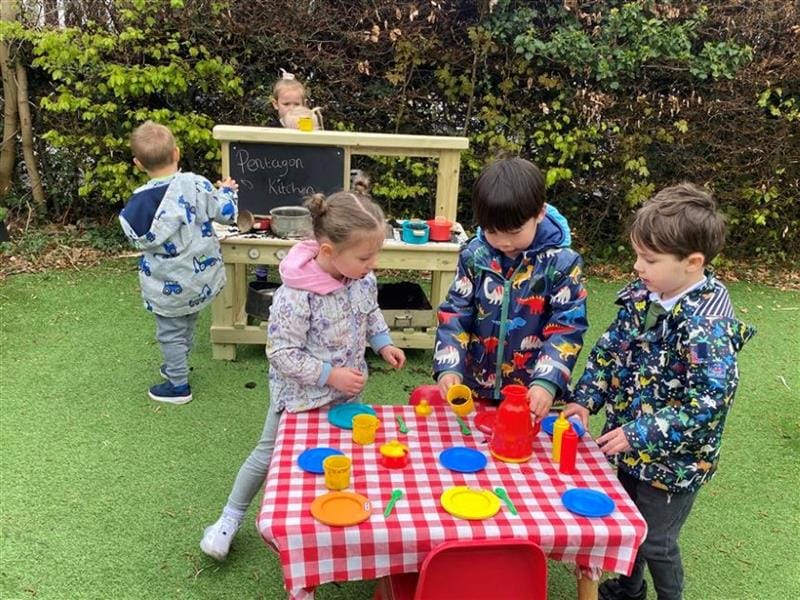
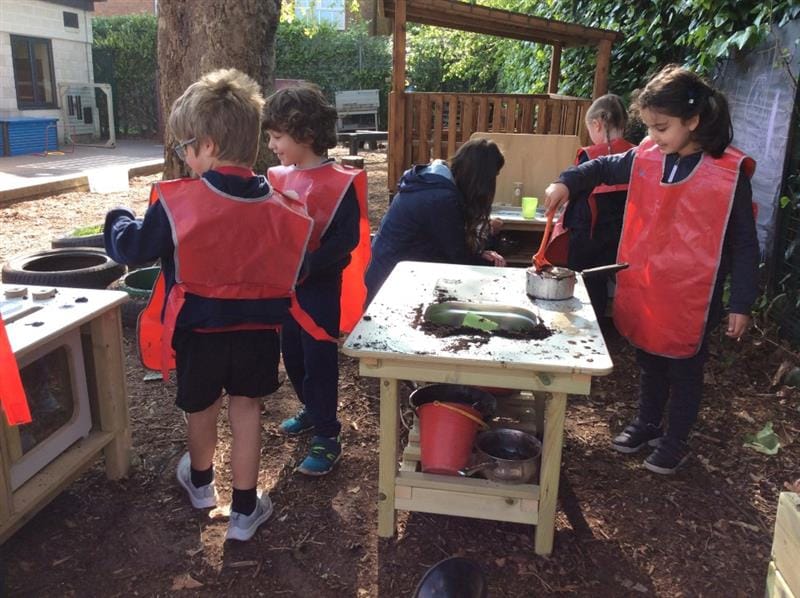
.jpg)
.jpg)

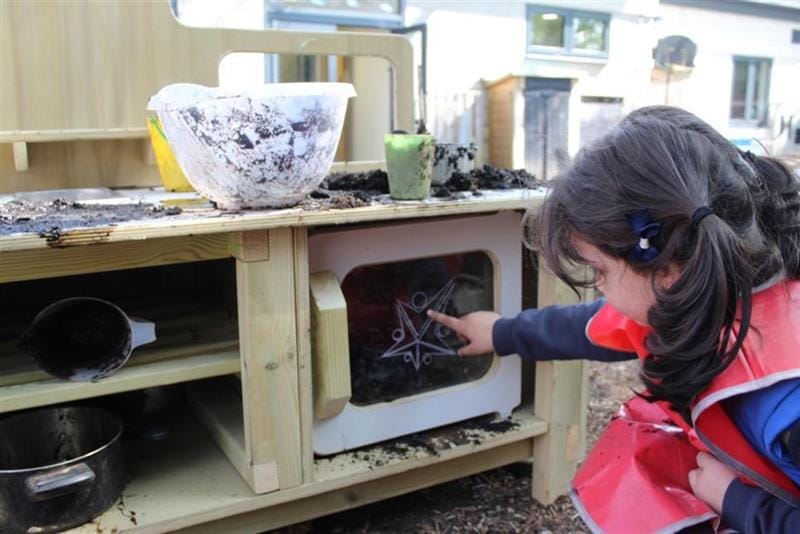
.jpg)
.JPG)
.JPG)
.JPG)
.jpg)
.JPG)
.jpg)
.JPG)
.JPG)
.jpg)
.jpg)
.JPG)
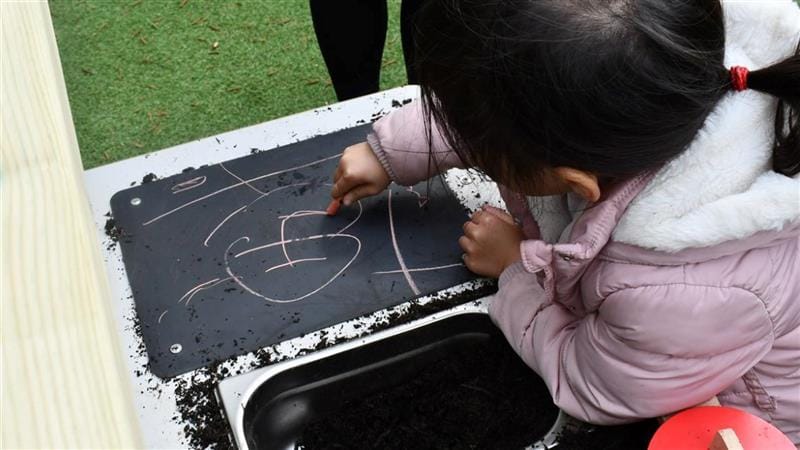
.JPG)

